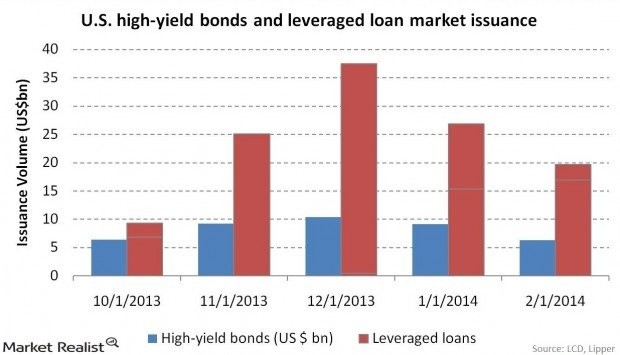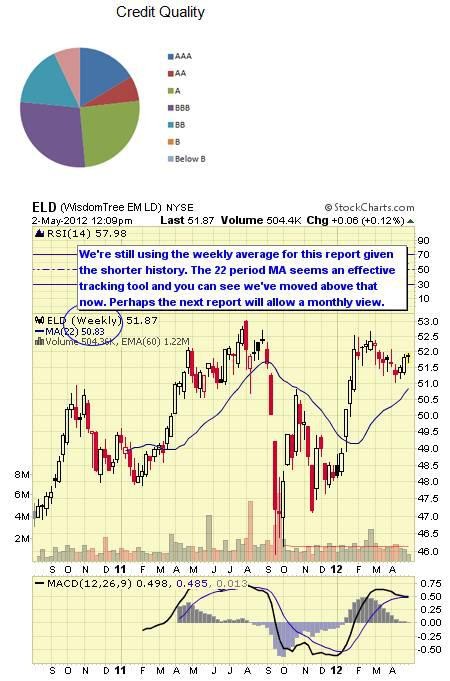Top 10 Leveraged Bond ETFs
Post on: 15 Апрель, 2015 No Comment

Exclusive FREE Report: Jim Cramer’s Best Stocks for 2015.
NEW YORK ( ETF Digest ) — With inflation pressures either rising or falling — and with the dollar in decline — it’s important to have portfolio protection for fixed-income portfolios. A more aggressive way to do this is through leveraged fixed-income long or short ETFs. More conservative investors will find inverse bond issues more to their liking.
This sector nevertheless is most suited to speculators since, even with the leverage employed, it still may be less than with trading alternatives like options or futures. Once again these exist for speculators primarily to use in a tactical manner most likely.
Given accommodative monetary policies across the globe, it may seem untimely to hedge or short bonds. In fact, recently the U.S. Fed has stated they’ll keep interest rates low beyond 2013 perhaps making the use of these products untimely. But, down the road it’s helpful to have these products available when you need them.
In fact, as you review bearish inverse and leveraged issues, you’ll note some interesting and perhaps counter-intuitive conditions. Most of the AUM (Assets under Management) is concentrated in bearish issues while most of the positive results are in the bullish issues. Why is this? Primarily, large institutions and retail investors’ make-up what’s often referred to as the bond vigilantes or bond police. These consist of investors in the open market who can and have in the past force changes in Fed policies through their investment activity. Therefore, even though Fed policy may state a low interest rate policy, or ZIRP (Zero Interest Rate Policy) as is presently the case, investors may choose to act in a manner opposite. In other words, they don’t believe current policies are valid and wish to bet against them. That said, betting against Fed and other central bank policies have been a speculator’s graveyard. You can see this in the performance results of various bearish ETFs listed below.
Understanding how leveraged issues operate and perform is another issue facing investors. Firstly, volatility in interest rate instruments and compounding features may, and have, negatively affected how these products may track respective indexes. Therefore, sometimes without careful management of your positions these products may not deliver what you would normally expect. This makes timing and technical analysis all the more important as to when to use these products or not.
We’re not ranking these ETFs favoring one over another so don’t let the listing order mislead you. Although we may use some of these in ETF Digest portfolios it’s not our intention to recommend one over another.
Whereas our previous technical analysis methodology involved using evaluating monthly charts making timing more easily evaluated, inverse issues require greater attention and this involves shorter-term views. Making these tactical decisions then shortens our view to weekly charts augmented by daily chart views and analysis. In our view it pays to be active and utilize a more proactive risk management approach.
To determine positions, it is often most useful to track the relevant indices and/or conventional ETFs to which these leveraged products are linked versus these issues themselves. Often erratic behavior of the leveraged issues can alter what might ordinarily be the right position.
One little known fact is often it’s better to short the bullish ETF versus going long the bearish issue. This is because the opposing issue can deteriorate faster than opposite issue. Many retail investors are unable to do this other than through some complex options strategies for example.
Finally, investors must take into account the low AUM for some issues and question whether as a business model for the sponsor, they will continue to exist. For example, recently Direxion Shares closed leveraged short and long short-term Treasury issues due to low AUM and trading activity. Investors must remain alert to these potential events.
ProShares 2 X Leveraged Long 20+ Year Treasury ETF (UBT)
UBT follows the Barclays Capital U.S. 20+ Year Treasury Index (200%) Index and is representative of potentially twice the return of TLT (iShares Lehman Long 20+ Year Treasury ETF). When trading any of these issues we would recommend keying off the index or unleveraged ETF to assess positions. The fund was launched in January 2010. The expense ratio is .95%. AUM (Assets under Management) equal $13 million and average daily trading volume is less than 31K shares. As of late February 2012 the YTD return was -7.43%. The one year return was 74.63%.
20Digest/top10_022912/image002.jpg /%
ProShares 2 X Leveraged Short 20+ Year Treasury ETF (TBT)
TBT follows the Barclays Capital 20+ Year Treasury Index (200%) Index and is representative of potentially twice the inverse return of TLT (iShares Lehman Long 20+ Year Treasury ETF). When trading any of these issues we would recommend keying off the index or unleveraged ETF to assess positions. The fund was launched in April 2008. The expense ratio is .95%. AUM equal $4.4 billion and average daily trading volume is 14M shares. As of late February 2012 the YTD return was -7.43%. The one year return was 74.63%.
Another choice within the Treasury sector is TPS (ProShares Ultra Short TIPS ETF) which was only launched in February 2011. As it seasons it will offer another opportunity to speculate on shorting Treasury bonds.
20Digest/top10_022912/image003.jpg /%
Direxion Shares 3 X Leveraged Long 20+ Year Treasury ETF (TMF)
TMF follows the NYSE 20 Year Plus Treasury Bond Index (300%) which like its competitor UBT seeks to track the returns of the long-term 20 year and greater maturity range of the U.S. Treasury bond market using 3 X leverage. Here too we would follow either TLT or the U.S. 30 Year Treasury Bond futures contract to determine positions and trading. The fund was launched in April 2009. The expense ratio is .95%. AUM equal $25 million and average daily trading volume is 145K shares. (With lower AUM and higher trading volume you can see this is a market for traders.) As of late February 2012 the YTD return was -11.24%. The one year return was 111.74%.
20Digest/top10_022912/image004.jpg /%
Direxion Shares 3 X Leveraged Short 20+Year Treasury ETF (TMV)
TMV follows the NYSE 20 Year Plus Treasury Bond Index (300%) which like its competitor TBT seeks to track the returns of the long-term 20 year and greater maturity range of the U.S. Treasury bond market using 3 X leverage. Here too we would follow either TLT or the U.S. 30 Year Treasury Bond futures contract to determine positions and trading. The fund was launched in April 2009. The expense ratio is .95%. AUM equal $301 million and average daily trading volume is 354K shares. As of late February 2012 the YTD return was 9.46%. The one year return was -69.28%.
20Digest/top10_022912/image005.jpg /%
ProShares 2 X Leveraged Long 7-10 Year ETF (UST)
UST follows the Barclays Capital U.S. 7-10 Year Treasury Index (200%) which essentially follows IEF (iShares 7-10 Year Treasury Bond ETF) and/or the Treasury 10 year continuation futures contract with 2 X leverage. The fund was launched in January 2010. The expense ratio is .95%. AUM equal $22 million and average daily trading volume is 73K shares. As of late February 2012 the YTD return was -.74%. The one year return was 34.53%.
20Digest/top10_022912/image006.jpg /%
ProShares 2 X Leveraged Short 7-10 Year ETF (PST)
PST follows the Barclays Capital U.S. 7-10 Year Treasury Index (200%) which essentially follows IEF (iShares 7-10 Year Treasury Bond ETF) and/or the Treasury 10 year continuation futures contract with 2 X leverage short. The fund was launched in April 2008. The expense ratio is .95%. AUM equal $374 million and average daily trading volume is 94K shares. As of late February 2012 the YTD return was .39%. The one year return was -29.51%.
An alternate choice might include TBZ (ProShares Ultra Short 3-7 Year Treasury ETF) which gives exposure to a shorter-term hedging or speculation opportunity.
20Digest/top10_022912/image007.jpg /%
Direxion Shares 3 X Leveraged Long 3 X 7-10 Year ETF (TYD)
TYD follows the NYSE Current 7-10 Year U.S. Treasury Bond Index (300%) which is also comparable to IEF (iShares Lehman 7-10 Year Treasury ETF) and the U.S. Treasury 10 year futures continuation contract when identifying trends for trading. The fund was launched in April 2009. The expense ratio is .95%. AUM equal $7.7 million and average daily trading volume is 10K shares. As of late February 2012 the YTD return was -1.41%. The one year return was 48.00%.

20Digest/top10_022912/image008.jpg /%
20Digest/top10_022912/image009.jpg /%
Direxion Shares 3 X Leveraged Short 3 X 7-10 Year ETF (TYO)
TYO follows the NYSE Current 7-10 Year U.S. Treasury Bond Index (300%) which is also comparable to IEF (iShares Lehman 7-10 Year Treasury ETF) and the U.S. Treasury 10 year futures continuation contract when identifying trends for trading. The fund was launched in April 2009. The expense ratio is .95%. AUM equal $55 million and average daily trading volume is 18K shares. As of late February 2012 the YTD return was .15%. The one year return was -42.42%.
20Digest/top10_022912/image010.jpg /%
ProShares Ultra High Yield 2 X ETF (UJB)
UJB follows the iBoxx $ Liquid High Yield Index (200%) which is the leveraged version of HYG (iShares iBoxx High Yield Corp Bond ETF) which iShares would no doubt declaim. The fund was launched in April 2011. The expense ratio is .95%. AUM equal $2.1 million and average daily trading volume is less than 3K shares. As of late February 2012 the YTD return was 4.72%. The one year return isn’t yet available.
20Digest/top10_022912/image011.jpg /%
ProShares Ultra Investment Grade 2 X ETF (IGU)
IGU follows the iBoxx $ Liquid Investment Grade Index (200%) which is the leveraged version of LQD (iShares iBoxx Investment Grade Corp Bond ETF) which iShares would no doubt also declaim. The fund was launched in April 2011. The expense ratio is .95%. AUM is less than $2.4 million and average daily trading volume is less than 6K shares. As of late February 2012 the YTD return was 8.23%. The one year return was not available.
20Digest/top10_022912/image012.jpg /%
Since interest rates and monetary policies globally have been so accommodative it hasn’t been very prudent or effective to use any of the short products. At the same time, it is stunning how many investors continue to fade (short) central bank policies over the past decade of ever declining interest rates. But, things can change at some point certainly. That remains the bearish bet. Remember, timing is everything when dealing with these products.
With demographics showing high levels of baby boomer retirees about to enter markets, fixed income products will be more actively sought and used as investors naturally become more conservative. As this happens, some investors will want these products available especially should interest rates rise sharply in the future.
For further information about portfolio structures using this or other ETFs see www.etfdigest.com.
The ETF Digest has no current positions in any of the ETPs featured in this review.
You may address any feedback to: feedback@etfdigest.com
(Source for holding data is from sponsors and from various ETF sources.)














